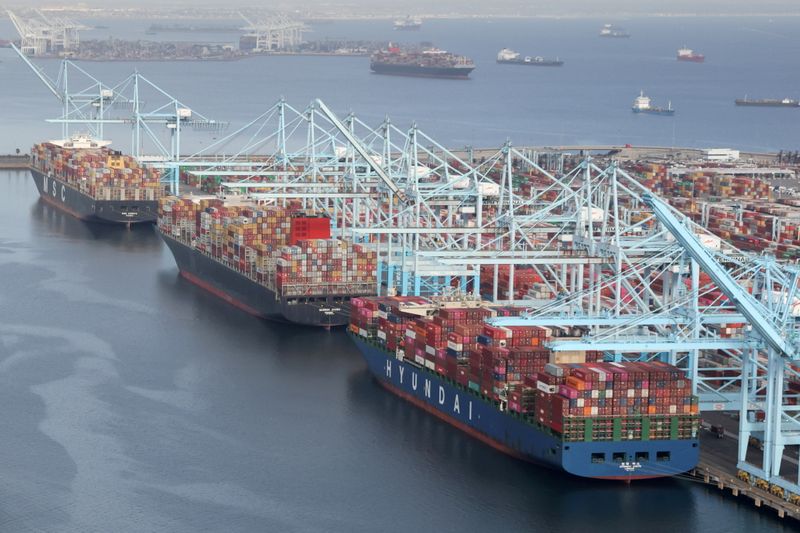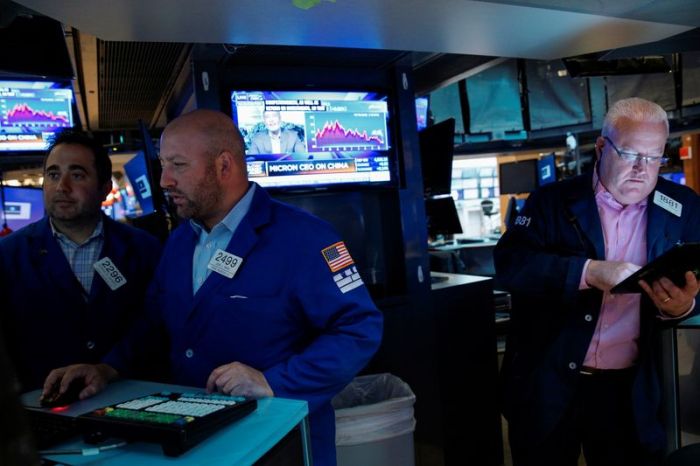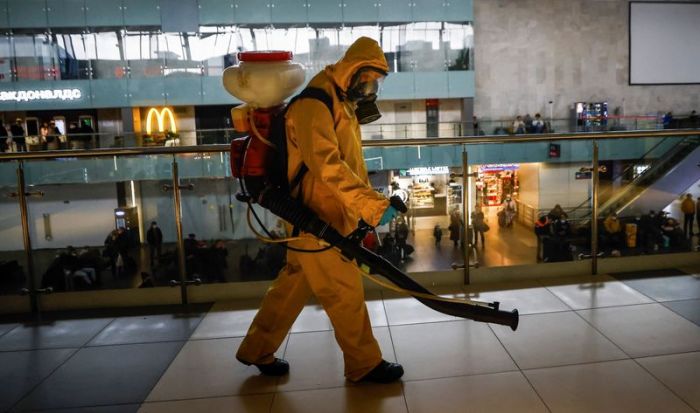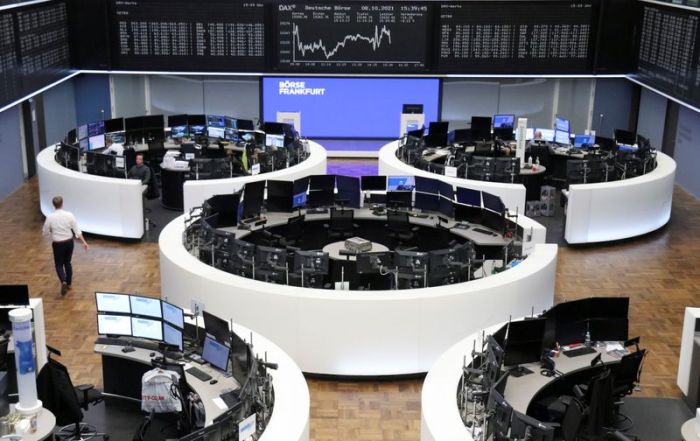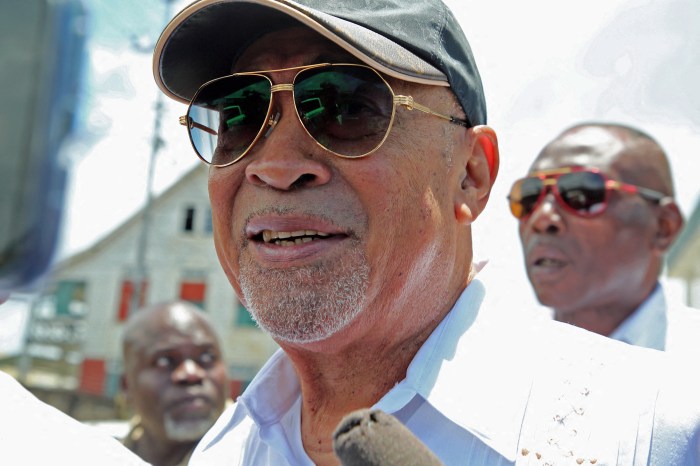WASHINGTON (Reuters) -Trade chiefs from the world’s wealthy industrial democracieswill seek on Friday to address worsening supply chain woes that are fueling inflation and inhibiting growth, but trade experts say they have few options for a rapid fix to problems driven by market forces.
The G7 trade ministers meeting in London will discuss ways to fight protectionism, adopt digital trade principles and cooperate to quickly identify and address supply bottlenecks, a statement from the hosting British trade ministry said.
“We have seen from the COVID-19 pandemic how fragile our global supply chains can be,” UK Trade Secretary Anne-Marie Trevelyan said. “The UK will work with our G7 and trade partners to build stronger, greener supply chains and a more resilient economy.”
Clogged ports and global shortages of semiconductors and other key components that have shut factories have crimped economic growth https://www.reuters.com/business/imf-cuts-global-growth-outlook-supply-bottlenecks-hobble-pandemic-recovery-2021-10-12 and pushed supply chain concerns to the top of the to-do list for economic policymakers.
U.S. Trade Representative Katherine Tai said in Brussels on Thursday that supply disruptions are a “huge concern” especially in the short term where they are “affecting everyday people’s lives.”
But trade experts say that the key solutions within the purview of trade officials are likely to be longer-term fixes, such as investments in ports and infrastructure to speed goods to market and diversifying supply chains to make them more resilient.
Market forces that created excess demand for goods as economies reopened following coronavirus shutdowns may already be well on their way to correcting the problem.
“These officials have very few arrows in their quiver to address this problem,” said Harry Broadman, a managing director at Berkley Research Group and a former U.S. trade official. “This is ultimately driven by consumer demand.”
With demand and supply out of sync and the logistics struggling to catch up, it could take up to six months for many goods shortages to ease, he said, with much of the shift brought about by market forces and private-sector firms filling the gap.
President Joe Biden announced last week new 24 hour-a-day port operations in Los Angeles and called on private-sector logistics firms to “step up” along with big retailers such as Target Corp and Wal-Mart Inc to speed goods to shelves in time for the Christmas holidays.
But logistics experts, economists and labor unions have warned that the efforts may be only incremental steps https://www.reuters.com/world/us/us-supply-chain-too-snarled-biden-christmas-fix-experts-say-2021-10-14 in unwinding the backlog.
Addressing some of the most critical supply chain needs will take time, said William Reinsch, a trade expert at the Center for Strategic and International Studies and a former Commerce Department export official.
Adding domestic production capacity for more semiconductors to reduce reliance on a handful of Asian countries will take years and upgrading port infrastructure to increase efficiency and throughput is also a long-term effort, he said.
TOO MUCH MONEY
Much of the current problem is a mismatch of strong pent-up demand for goods fueled by coronavirus aid checks and savings built up during pandemic lockdowns against supplies constrained by production shutdowns, dwindling inventories and shortages of workers.
U.S. Treasury Secretary Janet Yellen described the phenomenon as a “very, very unusual shock” that shifted spending away from services such as travel, lodging and restaurants.
“Instead, we’ve been gobbling up goods and commodities like we’ve never seen before,” Yellen told MSNBC in an interview https://www.msnbc.com/stephanie-ruhle/watch/secy-yellen-discusses-economic-recovery-efforts-after-very-unusual-shock-of-covid-pandemic-124029509961 that aired on Wednesday.
But the boom in consumption that has pushed U.S. consumer spending on durable goods 25% above trend this year will not last and will likely be replaced by below-normal demand in 2022, UBS Chief Economist Paul Donovan said in a note to clients. That will slow GDP growth and cool inflation.
“Once the pent-up demand has been satisfied, there is no further need to spend. The person who has bought a new washing machine this year does not rush to buy another new washing machine next year,” Donovan wrote.
PEAK CRISIS?
Equity analysts at Jefferies said the supply chain crisis may have already peaked with the passing of a mid-October shipping deadline for holiday goods, freeing up capacity for “baseline” shipping of machinery, automotive goods and home furnishings.
“There are signs that we are past the peak pinch and Jefferies’ analysts expect to see significant improvement by the second half” of 2022, the firm said in a research report.
Data from Tradeshift, a digital platform that facilitates and processes business-to-business trade transactions, indicates that an equalization of demand and supply is already under way.
The group’s index https://2aq8232w304w1v4dpt1zpxs8-wpengine.netdna-ssl.com/wp-content/uploads/sites/3/2021/10/TS-Index-of-Global-Trade-Health-Q3-2021.pdf of third-quarter order volumes fell by 24 points from the second quarter to 85, well below the 100-point score that is equal to pre-pandemic trend forecasts.
“Buyers are starting to question the wisdom of putting fresh orders into a system that is buckling under an enormous backlog,” Tradeshift Chief Executive Christian Lanng said in a statement. “The longer this situation continues, the more likely we’ll see a more prolonged reversal heading into 2022.”
(Reporting by David Lawder; Additional reporting by Philip Blenkinsop, William James and Andrea Shalal; Editing by Dan Burns and Peter Cooney)

